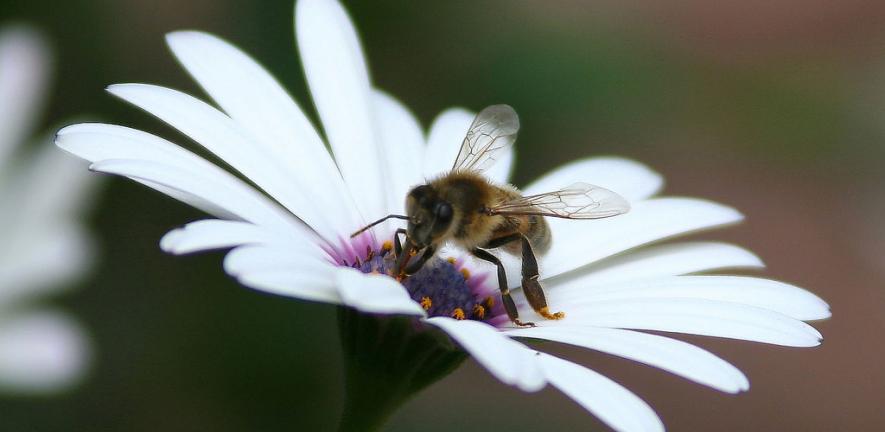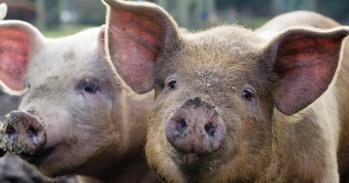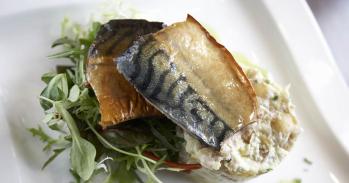
Some plants go to extraordinary lengths to attract pollinators. A unique collaboration between plant scientists and physicists is revealing the full extent of botanical advertising.
Some plants go to extraordinary lengths to attract pollinators. A unique collaboration between plant scientists and physicists is revealing the full extent of botanical advertising.
We need to look at flowers like an insect looks at them, using sophisticated optical instruments and measuring ultraviolet reflection.
Dr Beverley Glover
If you want to stand out from the crowd, you might dress to impress. The world of flowering plants is not so very different. Plants that depend on insect and other animal pollinators to carry their pollen from one plant to another employ sophisticated mechanisms to attract attention, and it’s not simply a case of scent, colour and a sugary nectar reward.
The lengths to which flowers go to self-advertise are being revealed through a collaboration between botanist Dr Beverley Glover and physicist Professor Ullrich Steiner. Their research project, funded by the Leverhulme Trust, is characterising how plants signal to pollinators not only through pigments but also through structural mechanisms, and their results have important implications for crop productivity.
Glover is also one of the contributors to a new series of online videos titled ‘Under the Microscope’ produced by the University of Cambridge. Her video, showing a developing daisy head, explains a trick that all plants in the daisy family use to attract pollinators – clustering together many tiny flowers to produce a structure that looks just like a single big flower.
“Botanists have long known that there are many tricks with which plants attract pollinators but not all are visible to the human eye,” she explained. “We need to look at flowers like an insect looks at them, using sophisticated optical instruments and measuring ultraviolet (UV) reflection.”
Taking a physical optical approach to understanding flowers is a new field, as Steiner explained: “Using modern optical methods such as spectroscopy with high spatial resolution we have been able to study the optical function of surface structures on plant petals and discover something new about how they give rise to structural colour in flowering plants.”
Structural colour is the generation of a visible colour independently of chemical pigments by influencing the behaviour of light. A physical structure within the petal reflects a narrow bandwidth of light wavelength, allowing all other wavelengths to pass through to the interior, where they are absorbed. The effect is often a more intense and pure colour than a pigment creates.
Dr Silvia Vignolini, who works on the project in the Department of Plant Sciences and the Cavendish Laboratory, has been characterising the incidence of structural colour among species of flowering plants. In recently published findings, she showed that the bright and glossy appearance of a buttercup’s petals is the result of interplay between two extremely flat surfaces in the epidermal layer of the petal. Reflection of light by the smooth surface of the cells and the air layer below the epidermis effectively doubles the gloss of the petal and reflects a significant amount of UV light.
Many pollinators, including bees, have eyes sensitive in the UV region. “To stand out against the green background, some flowers reflect light at a wavelength best suited to the photoreceptors in a pollinator’s eye,” explained Vignolini. In the case of some daisies, for example, the researchers have shown that the outer ring of ray florets (petal-like structures) reflects UV, whereas the inner ring does not; this, they speculate, could result in a ‘bulls-eye’ effect that draws the pollinator towards the centre.
Vignolini’s work has demonstrated that some plants produce iridescence through ordered striations in the plant epidermis which, rather like the grooves of a CD, have the effect of creating colour through interference. Remarkably, bumblebees can learn that the shifting colour is a signal of a rewarding flower and can remember that signal even when presented with novel flower colours. The results so far indicate that iridescence has evolved several times in the flowering plant kingdom and is more phylogenetically widespread than previously realised.
The project aims to understand not only the various physical mechanisms by which plants use structural colours, both at the cellular and genetic level, but also the nuances of how pollinators respond to these signals, as Glover explained: “Knowing how pollinators and plants are linked is important because we don’t know to what extent these interactions might become uncoupled as the climate changes. The ranges of plants or animals might move, or their developmental timings might change. The more we understand these interactions, the better placed we are to develop strategies to enhance the signals that make crops attractive to pollinators.”
This work is licensed under a Creative Commons Licence. If you use this content on your site please link back to this page.





